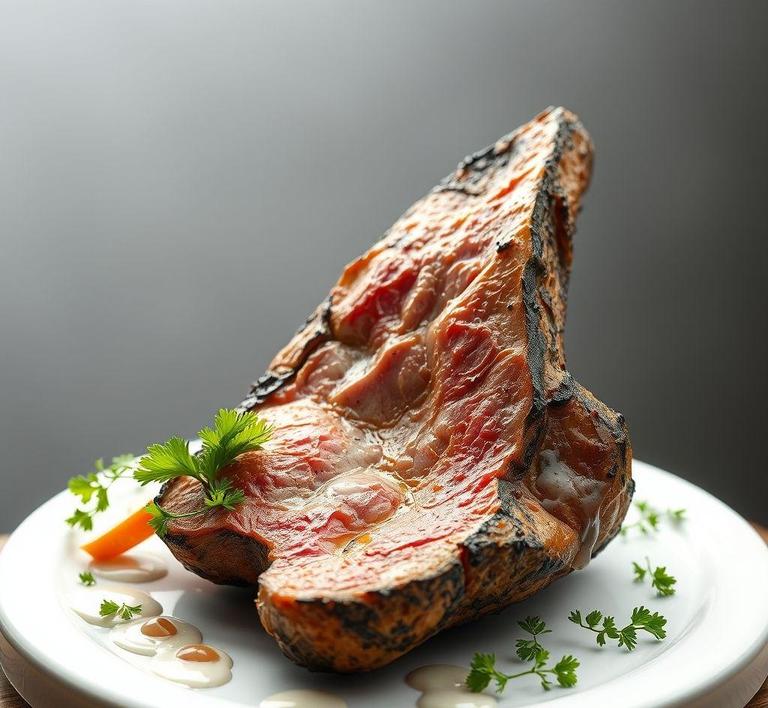So, you’ve cooked up a delicious tri tip and now you have leftovers, but what do you do with them? Can you refreeze tri tip, or is it a risky move? Refreezing meat can be a bit tricky, but don’t worry, we’ve got you covered! In this guide, we’ll walk you through the best practices for safely refreezing tri tip, including how to properly store it, when to freeze it, and what to keep in mind to maintain that tasty flavor and texture. Let’s dive into how to make the most of your leftovers without compromising on quality!
Can You Refreeze Tri Tip?

Tri tip, a cut of beef that is prized for its tenderness and rich flavor, is a favorite among grilling enthusiasts and home cooks alike. But when it comes to food storage, especially in the realm of meat, one question that often arises is: Can you refreeze tri tip? The answer is not entirely straightforward because it depends on several factors, including the method of freezing, the condition of the meat before freezing, and how the meat was thawed in the first place.
Can You Refreeze Tri Tip?
In general, refreezing tri tip is not recommended, especially if it has already been thawed. This is because freezing and thawing meat multiple times can lead to a loss of quality and potential food safety risks. When tri tip is thawed, the ice crystals within the meat’s cells begin to melt, causing the muscle fibers to break down. This process can lead to a change in texture, making the meat less juicy and tender. Additionally, repeated freezing and thawing can promote the growth of harmful bacteria, especially if the meat has been left out at room temperature for too long.
However, there are exceptions to this rule. If tri tip has been cooked before freezing, it is generally safer to refreeze. Cooked meat holds up better to the freezing and thawing process, as the initial cooking kills any harmful bacteria that might have been present. The texture and flavor of cooked tri tip may still suffer from multiple freeze-thaw cycles, but it is less likely to pose a health risk.
One key factor in determining whether it’s safe to refreeze tri tip is how quickly the meat was thawed. If the tri tip has been left at room temperature for an extended period, bacteria can begin to multiply, making it unsafe to refreeze. But if the meat has been thawed in the refrigerator, it may be safe to freeze again, as long as it has not been out of the cold zone for more than two hours.
How To Refreeze Tri Tip?
If you’ve decided to go ahead with refreezing your tri tip, there are several steps you can take to minimize the impact on quality and ensure food safety. The most important factor is how the meat is handled throughout the process.
1. Thaw Properly
When it comes to freezing and thawing meat, the key is to minimize the time spent in the temperature danger zone (between 40°F and 140°F). The safest way to thaw tri tip is in the refrigerator, where the meat will remain at a safe temperature (below 40°F). Avoid thawing tri tip at room temperature, as this can allow bacteria to proliferate.
2. Cook Before Refreezing (Optional)
If you want to ensure that your tri tip is still safe to eat after refreezing, consider cooking it first. Cooking the meat kills most bacteria that may have been present, and it also helps preserve some of the flavor and texture. You can then freeze the cooked tri tip in portions, which will be easier to thaw later on.
3. Use Airtight Packaging
When refreezing tri tip, make sure to use airtight packaging to protect the meat from freezer burn. Freezer burn occurs when air gets into the packaging, leading to the dehydration of the meat’s surface. Vacuum-sealing the tri tip is ideal, but if you don’t have a vacuum sealer, be sure to wrap the meat tightly in plastic wrap, followed by a layer of aluminum foil, or place it in a heavy-duty freezer bag.
4. Label And Date
It’s always a good idea to label the packaging with the date you froze the tri tip. This way, you’ll know how long it’s been in the freezer and can make sure you’re consuming it before it becomes too old, as meat loses quality over time, even in the freezer.
5. Freeze Quickly
Once the tri tip is properly wrapped, place it in the coldest part of your freezer to ensure it freezes quickly. The quicker the freezing process, the better it is for preserving the texture and flavor of the meat. Slow freezing can cause large ice crystals to form, which can damage the meat’s cell structure and lead to a mushy texture upon thawing.
Quality Impact
Refreezing tri tip can have a significant impact on its quality, even if it is done carefully and with the right precautions. Here’s a deeper look at how the quality might be affected:
1. Texture
The most noticeable effect of refreezing tri tip is a change in texture. Freezing and thawing meat causes ice crystals to form within its cells. When the meat thaws, the ice crystals melt and create gaps in the cell structure, which leads to moisture loss. This moisture loss results in a drier, less tender piece of meat. If the meat is refrozen, the process is repeated, and further moisture is lost. As a result, refrozen tri tip can become chewy and less enjoyable to eat, particularly if it was not cooked before freezing.
2. Flavor
The flavor of tri tip may also degrade with each freeze-thaw cycle. While the freezing process doesn’t change the meat’s inherent flavor, the moisture loss during thawing can cause it to become less juicy, which in turn can reduce its overall flavor. Cooked tri tip, however, tends to retain more of its flavor, as the cooking process seals in the juices.
3. Nutrient Loss
Repeated freezing can also result in slight nutrient loss, particularly when the meat is exposed to air during the freezing process (like if it’s not wrapped properly). Though the nutrient loss isn’t typically significant, it’s still worth considering if you’re particularly mindful of nutrition.
4. Freezer Burn
Another potential downside of refreezing tri tip is freezer burn. If the meat isn’t properly wrapped, it can become exposed to air in the freezer, causing parts of it to dry out and develop tough, discolored patches. These areas will not only affect the texture but can also impart an off taste to the meat. While freezer burn doesn’t make the meat unsafe to eat, it can greatly diminish its quality.
Refreezing tri tip is technically possible, but it comes with a number of caveats that could affect the quality and safety of the meat. If you must refreeze, it is crucial to handle the meat carefully to avoid compromising its texture and flavor. Thawing the meat properly, using airtight packaging, and freezing quickly are all essential steps in ensuring that the meat retains as much of its original quality as possible.
Ultimately, if you want to minimize the impact of refreezing on tri tip, it’s best to cook the meat first and then freeze it. This way, you’ll preserve much of its flavor, moisture, and safety, even after it’s been frozen more than once. While there are risks involved with refreezing tri tip, it can be done successfully if proper precautions are taken, allowing you to enjoy the meat again later with minimal loss in quality.
Is It Safe To Refreeze Tri Tip?
Refreezing tri-tip, or any meat for that matter, is a bit of a contentious issue in the culinary world. The primary concern with refreezing meat, particularly tri-tip, is how it affects both food safety and quality. When tri-tip is defrosted, bacteria can begin to multiply if the meat is left at temperatures that are in the "danger zone" (between 40°F to 140°F, where bacteria grow rapidly). Refreezing it can allow these bacteria to continue multiplying, potentially leading to foodborne illnesses if not handled correctly.
However, if you defrost tri-tip safely in the fridge (rather than at room temperature), and you haven’t left it out for extended periods, it can be safe to refreeze it. The key is that the meat should not have been exposed to temperatures above 40°F for more than 2 hours, or 1 hour if the ambient temperature is above 90°F (think summer cookouts). If you’ve thawed the meat using the microwave or by running cold water over it, it’s generally recommended not to refreeze unless you’ve cooked it beforehand.
One of the factors that affect whether it’s safe to refreeze tri-tip is how it was initially frozen. If it was frozen fresh and handled properly from the beginning, refreezing after it has been thawed can be safe as long as you follow the necessary precautions. The U.S. Department of Agriculture (USDA) suggests that meat can be safely refrozen if it was thawed in the refrigerator, and it hasn’t gone beyond the 2-hour threshold for temperature safety. When refrozen, the quality might not be as great as the first time it was frozen, but the meat is safe as long as it’s handled with care.
Signs That Tri Tip Should Not Be Refrozen
Not all meat is suitable for refreezing, and it’s important to recognize when your tri-tip should be discarded instead of being refrozen. There are a few key signs that will indicate whether your tri-tip is not safe to refreeze:
- Off Smell: If the tri-tip has developed a sour, rancid, or off-putting odor, it’s a clear sign that the meat has started to spoil. When meat begins to spoil, it can develop harmful bacteria that won’t be eliminated by refreezing. If the meat smells “funky”, discard it immediately.
- Slimy Texture: A slimy or sticky texture on the surface of the meat is another indication that bacteria are proliferating. When the surface of the tri-tip feels excessively slimy or tacky to the touch, this means that it has already begun to break down, and it’s not safe to refreeze.
- Discoloration: Fresh tri-tip has a vibrant red color, often with marbling of fat. If the meat turns an unnatural color, such as grey or brown, it’s a sign of spoilage. While some color change can happen due to oxidation, a drastic color change means that the meat is no longer in a good state for consumption.
- Improper Thawing: If the tri-tip was not thawed in the fridge but instead left out at room temperature for several hours or thawed on the countertop, it’s unsafe to refreeze. Thawing meat this way allows bacteria to thrive, and it would be much riskier to refreeze it.
- Excessive Ice Crystals: If the tri-tip has been frozen and thawed several times (either intentionally or unintentionally), it may be covered in large ice crystals. This not only ruins the texture of the meat but also suggests that the freezing process was interrupted, which can affect its safety.
Common Refreezing Mistakes
When it comes to refreezing tri-tip, some common mistakes can compromise both the safety and quality of the meat. Here are some of the most frequent errors people make:
- Refreezing Meat That Was Thawed Improperly: One of the most critical mistakes is refreezing meat that has been thawed improperly. If tri-tip was left out on the counter for more than two hours, bacteria could have already started to grow. Refreezing it in this condition only increases the risk of foodborne illness.
- Refreezing After Cooking: While it’s generally safer to refreeze cooked meat, many people make the mistake of refreezing meat that has already been cooked and then thawed. The texture of cooked tri-tip can suffer significantly from repeated freezing and thawing cycles, as it will become dry and tough.
- Not Wrapping Meat Properly Before Freezing: Freezing tri-tip in a poorly wrapped package can cause freezer burn, which dries out the surface of the meat and affects its taste. While freezer burn doesn’t make the meat unsafe, it will significantly reduce the quality of the tri-tip once it’s thawed. Always use airtight packaging to preserve freshness.
- Freezing and Thawing Multiple Times: Repeatedly freezing and thawing meat is one of the biggest mistakes. Every cycle of freezing and thawing compromises the meat’s texture and can increase the risk of contamination. Ideally, you want to freeze tri-tip only once, thaw it in the refrigerator, cook it, and then consume it.
- Not Checking the Temperature: Refreezing should only happen when the meat has been thawed in the refrigerator and hasn’t been exposed to the “danger zone”. People often assume it’s safe to refreeze meat simply because it’s been in the fridge, but you should also check the temperature of your fridge (it should be below 40°F) to ensure the meat was kept at a safe temperature during defrosting.
Tips And Tricks For Refreezing Tri-Tip
If you’ve decided that your tri-tip is still in good condition for refreezing, here are a few tips and tricks to ensure the best possible outcome:
- Wrap It Well: Properly wrapping your tri-tip before freezing is essential to prevent freezer burn. Use heavy-duty plastic wrap, followed by aluminum foil or vacuum-seal bags to keep air out. If you don’t have a vacuum sealer, be sure to press as much air out of the packaging as possible.
- Portion Control: Consider cutting your tri-tip into smaller portions before freezing it. This way, you only thaw what you need rather than defrosting the whole roast. Smaller portions also freeze more evenly and are less prone to ice crystals forming.
- Freeze as Soon as Possible: If you know you’re not going to use the tri-tip within a few days of purchase, freeze it as soon as possible after bringing it home. Fresh tri-tip freezes better than meat that has already been sitting in the fridge for a few days.
- Label and Date: Always label the package with the date when the tri-tip was frozen. This helps keep track of how long it’s been in the freezer, and while frozen meat can last a long time, it’s always best to use it within 3-4 months for optimal taste and texture.
- Thaw in the Fridge: When it comes time to defrost your tri-tip, always do so in the fridge, even if you’re in a hurry. Thawing at room temperature or in hot water can lead to bacterial growth, whereas refrigerating ensures the meat stays at a safe temperature.
Conclusion
Refreezing tri-tip can be safe if handled properly, but it comes with certain risks that must be carefully considered. The key factors to ensure safety are proper thawing techniques, keeping the meat at the correct temperature, and watching for signs of spoilage. While refreezing can result in a slight drop in quality-affecting texture and moisture-it can still be a viable option when done correctly. By following the right steps, avoiding common mistakes, and keeping an eye out for signs of spoilage, you can safely refreeze tri-tip and enjoy it at a later time. So, the next time you find yourself with extra tri-tip, just remember that safety and quality are the top priorities.


